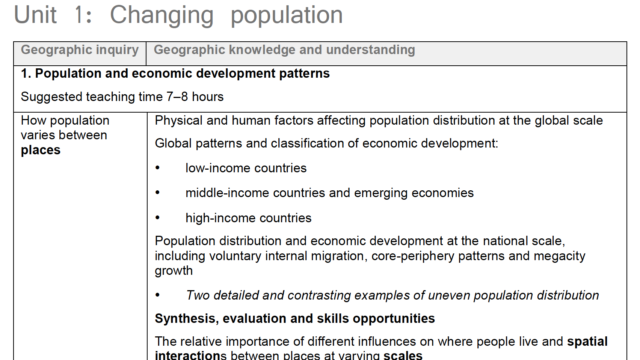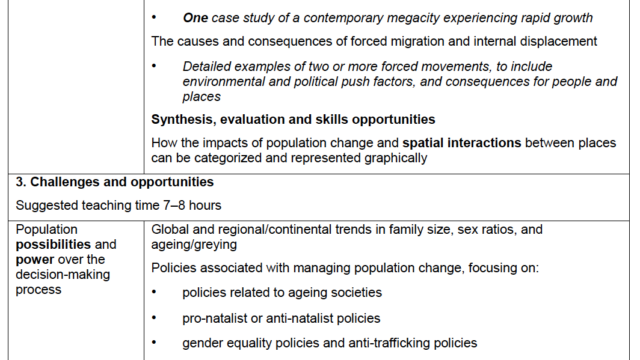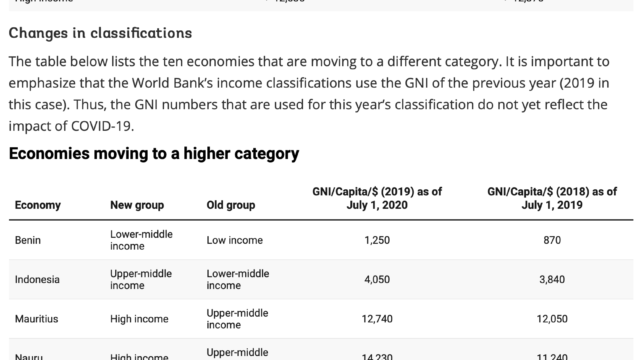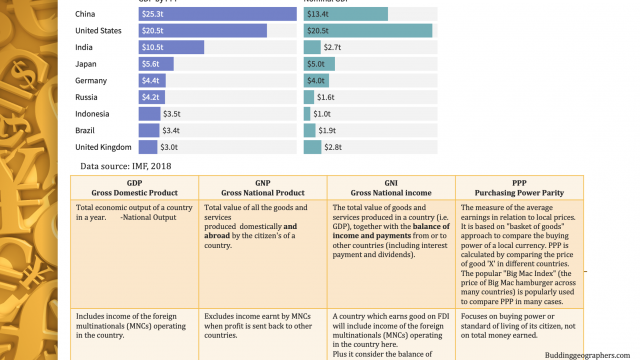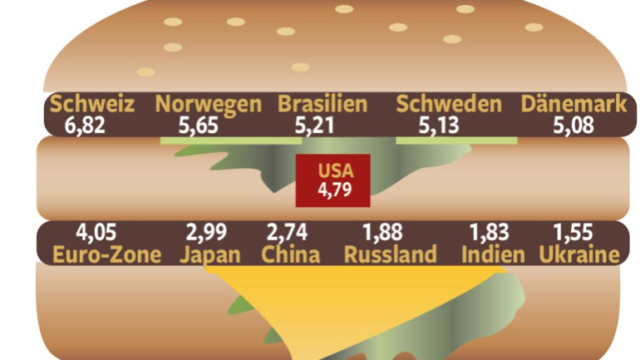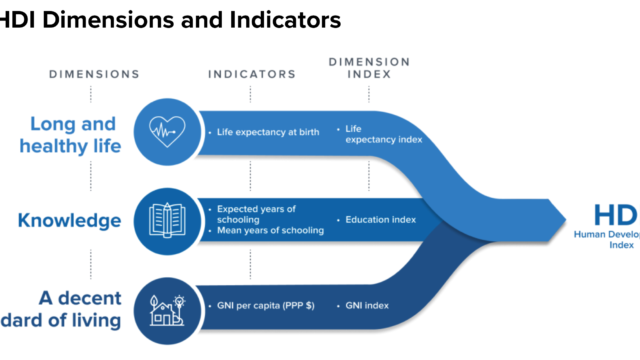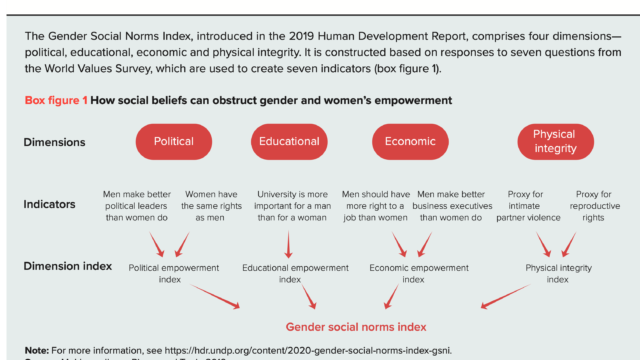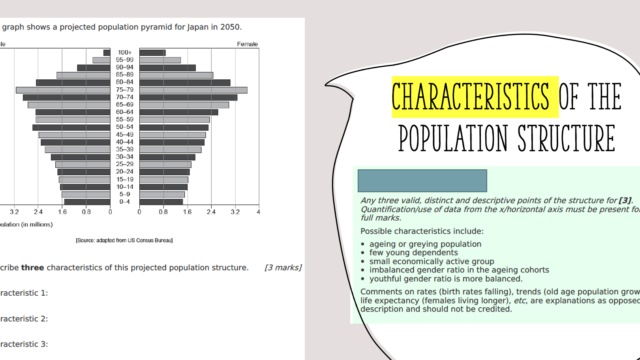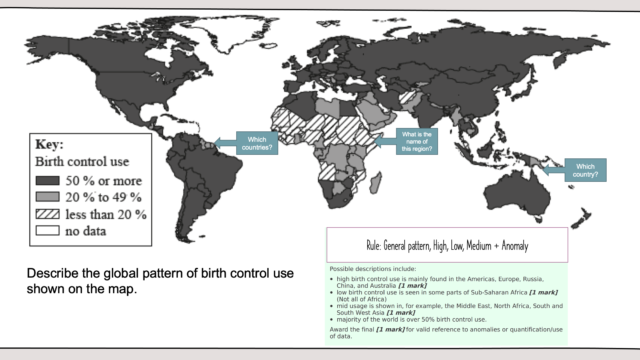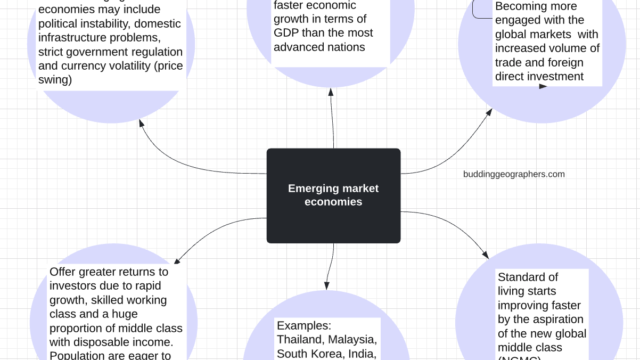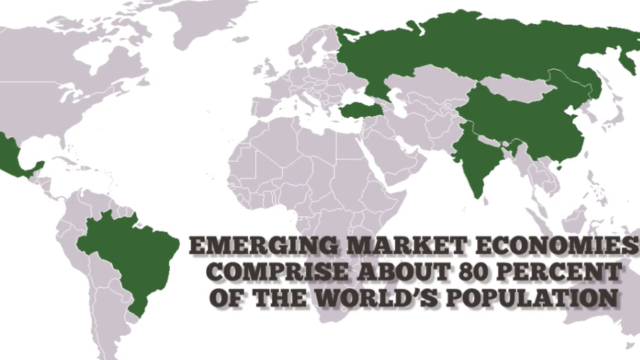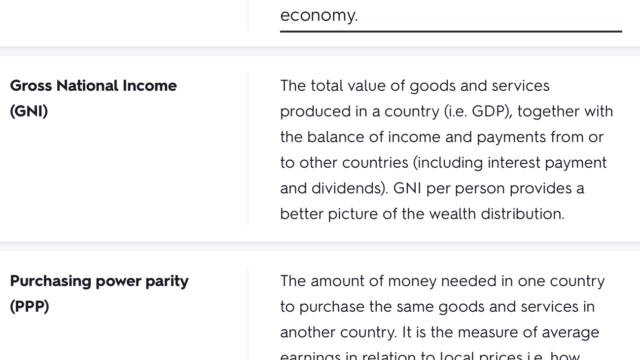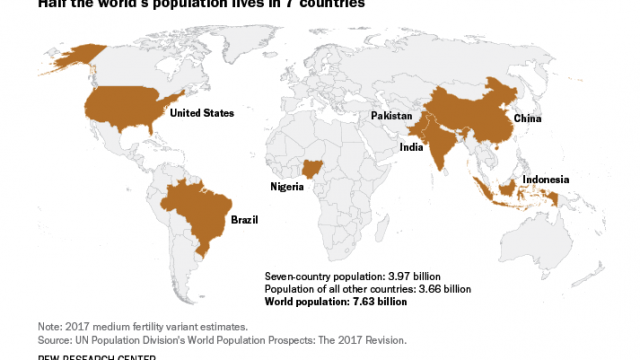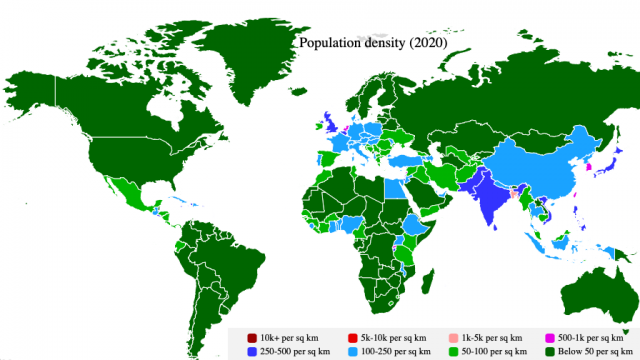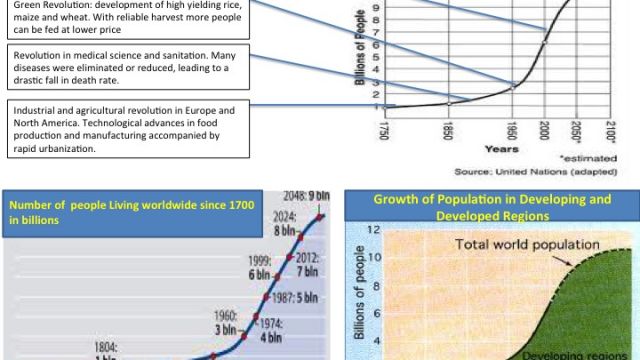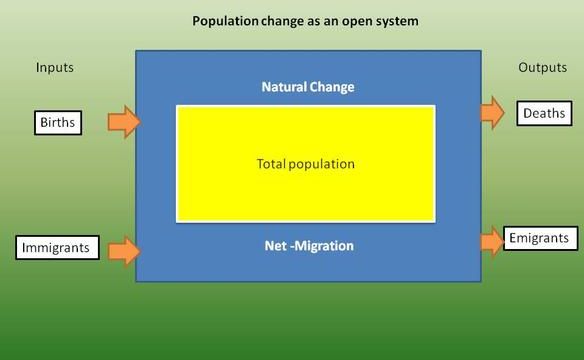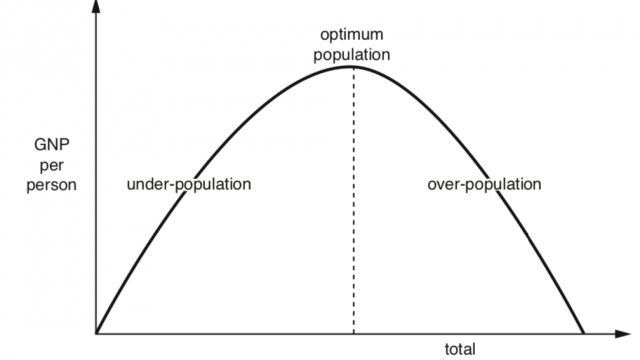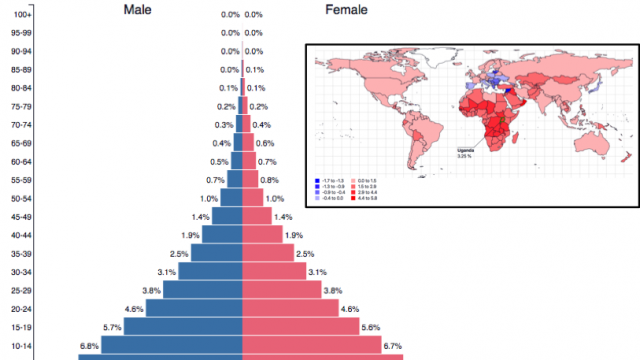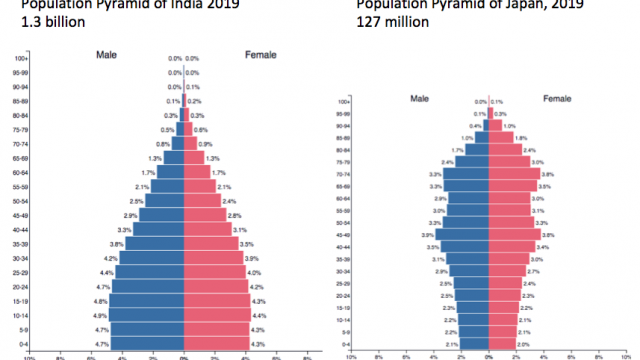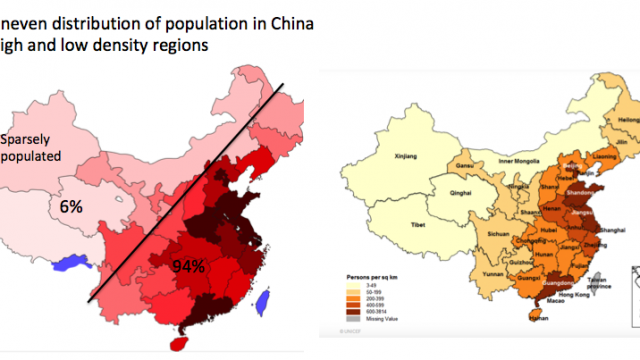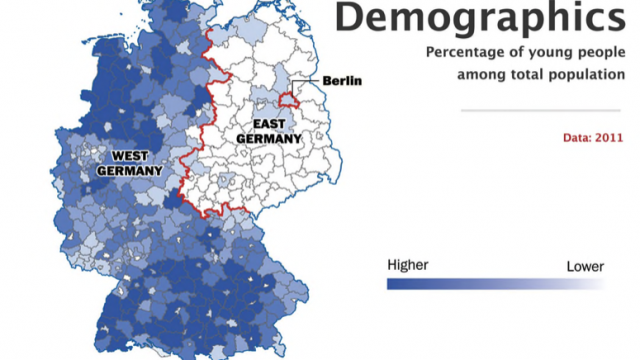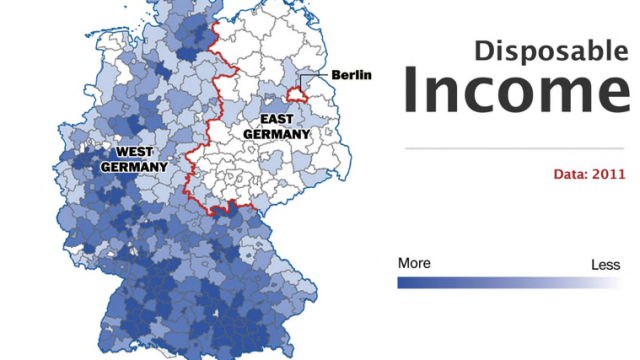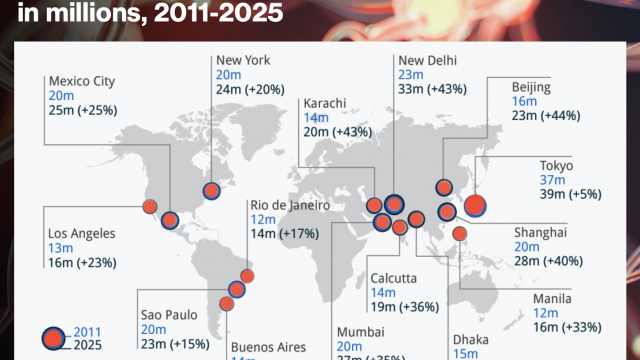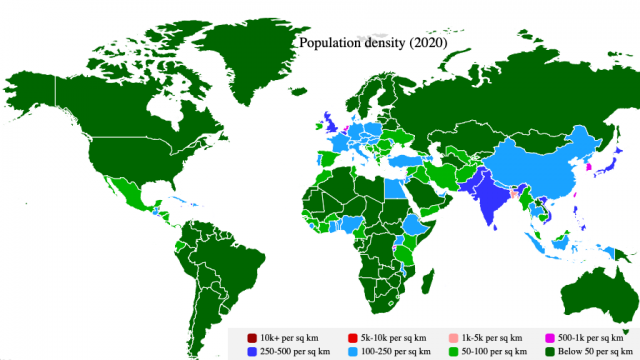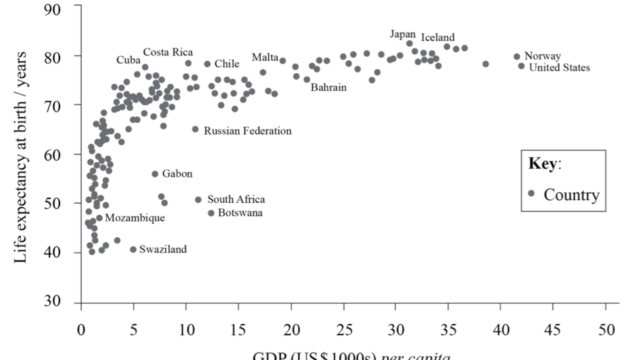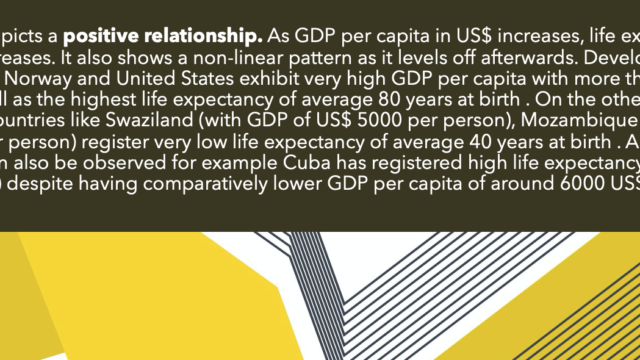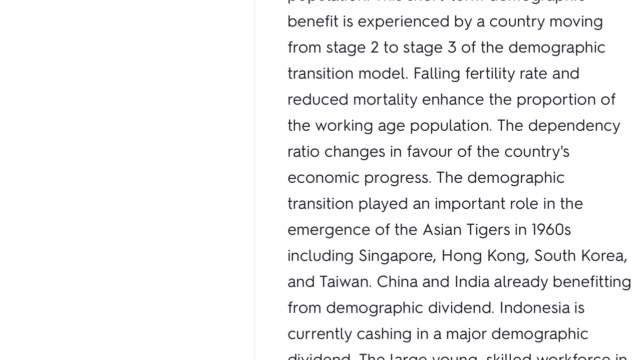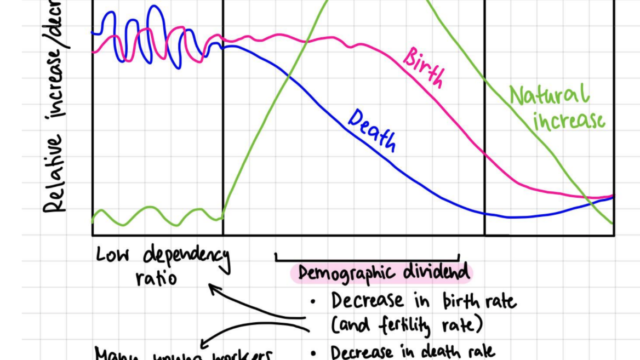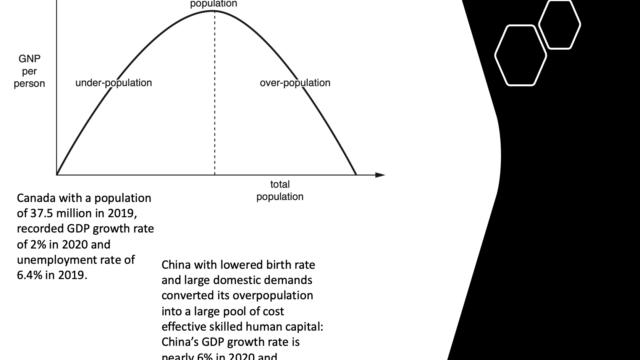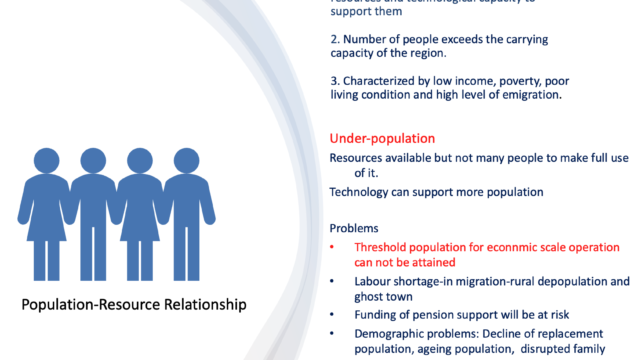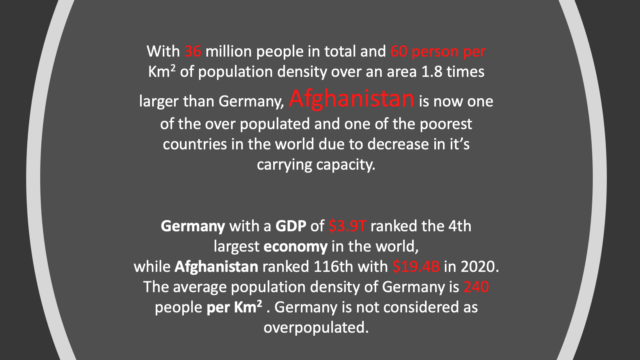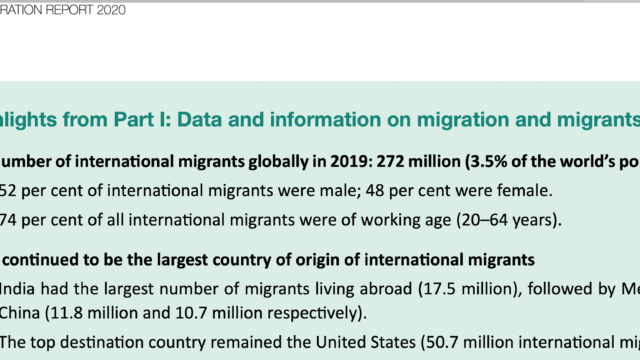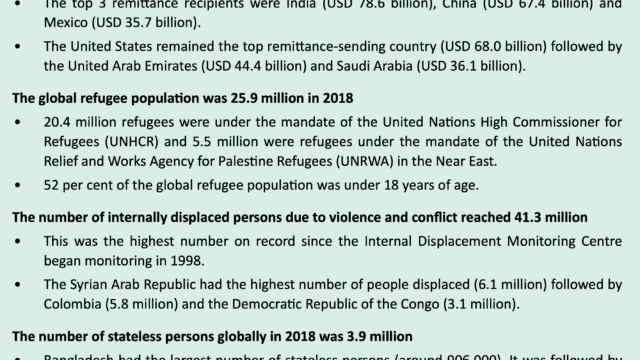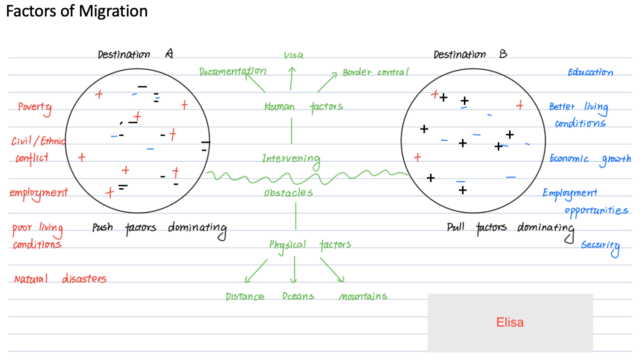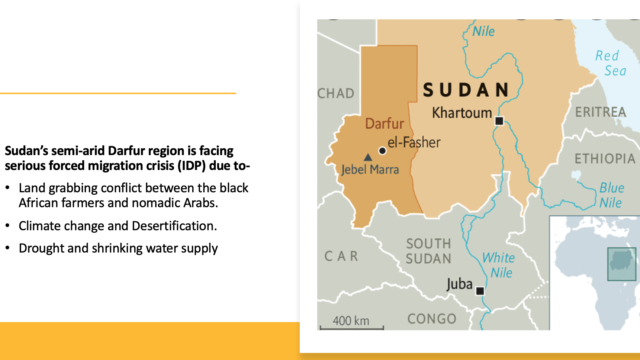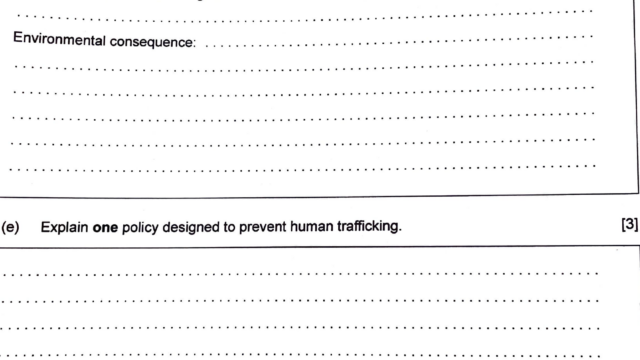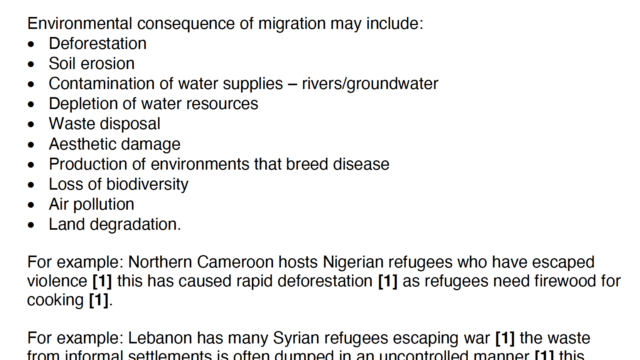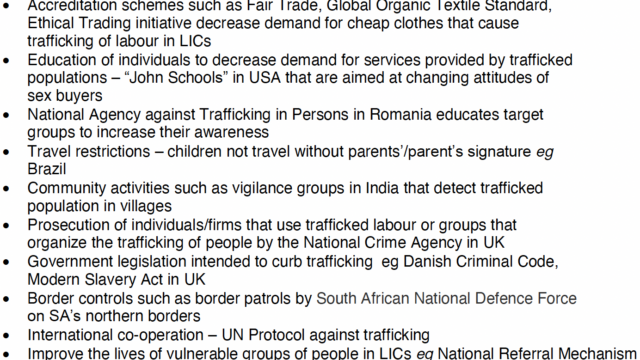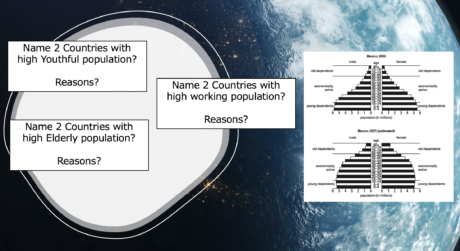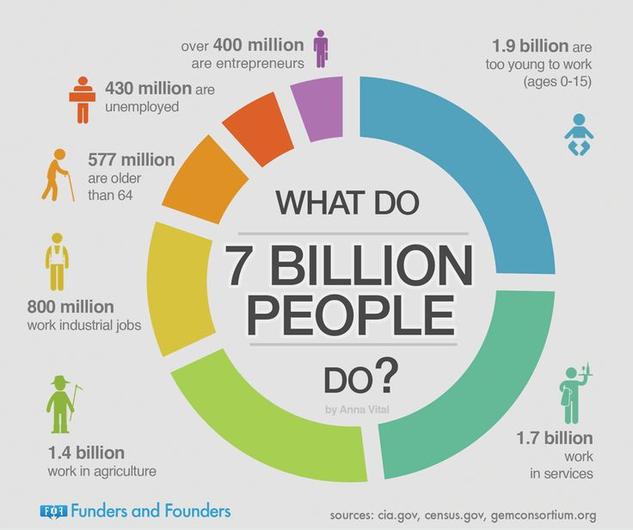Population growth and distribution
- World population reached 500 million by about 1500. It took all of human history up to the early 1800s for world population to reach 1 billion people, and until 1960 to reach 3 billion
- The highest ever global population growth rate was reached in mid-1960s when population growth in the developing region peaked at 2.4% a year, popularly known as ‘population explosion’. By the late 1990s population growth rate had slowed down. However, population momentum drags the population growth at this period even though the fertility rate had fallen down. It took only 12 years for the world population to increase from 5 billion to 6 billion in 1999.
- Population growth rates have been falling in all regions of the world since 1990s, and this trend is predicted to continue. Current expectations are that the human population will level off at around 9.6 billion people by 2050, and will stabilize or slowly decline thereafter. According to the UN prediction, there’s an 80 percent chance that the actual number of people in 2100 will be somewhere between 9.6 to 12.3 billion.
- Europe’s population is projected to decline by 14 per cent mainly due to negative population momentum, the report states. Overall, life expectancy is projected to increase in developed and developing countries in future years.
| Demographic terminologies and basic concepts | Definitions | Additional information and current data |
|---|---|---|
| Demography | Study of population or the science of population. | Harvard University Course: Click here to have information on the Harvard Center for Population and Development studies Click here to view live demographic parameters on Worldometer Click here to find Interactive data on world population from UN Population Division. |
| Crude Birth Rate (CBR) | The total number of live births in a year for every 1,000 people alive in the country/society. | Click here to see the ranking of the countries with the highest average birth rate (birth per woman). Here is the data for live birth per 1000 |
| Crude Death Rate (CDR) or Mortality rate | The total number of deaths in a year for every 1,000 people alive in the country/society. | Here is the list of countries reported to have the highest CDR |
| General fertility rate (GFR) Or Total fertility rate (TFR) | The average number of live births per 1,000 women of childbearing age (14-49 years) in a given year. | Click here to analyse how Total fertility rate varies by country |
| Difference between high Population Density and Overpopulation | Population density is the number of people per square mile or people per square kilometer. Over population occurs if the number of people exceeds the carrying capacity of the region means there are too many people relative to resource and technology creating pressure on the available resource endowment and thereby deteriorating the standard of living of a region. A region may have high population density but may not be overpopulated such as Singapore, Denmark and many other regions if they can maintain a desirable standard of living. On the other hand, a region or country may have low population density but could be over populated because of the lower carrying capacity. | European city-state of Monaco is the most densely populated country with a population density of nearly 26 thousand people per sq. km., followed by the Chinese territory of Macau and Singapore. Among top 10 densely populated countries/territories six are located in Asia and four are located in Europe. Click here to review the list of countries by population density. |
| Many areas of the world are now overpopulated. The problems faced by people in the overpopulated countries are | 1. Lack of raw materials, fuel, inadequate food supply and consequent starvation and conflict, 2. Lack of jobs and poverty 3. Poor access to education and health care. 4. Overcrowded housing, lack of space and squatter settlements. 5. Traffic congestion, pollution and high level of disease 6. Overused agricultural land, overgrazing, soil erosion and deforestation. 7. Inadequate water supply and lack of sanitation. | 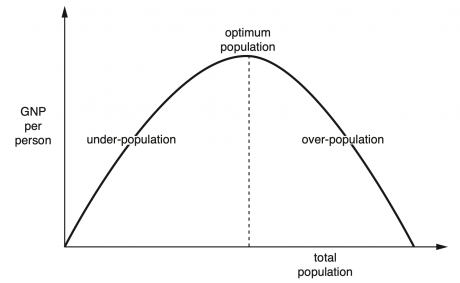 |
| Population distribution | Signifies the way people are spread out across the world. For example around 4 billion people out of 7.8 billion in 2020 live in Asia, means around 59% of the population live in Asia, 17% in Africa, 10% in Europe, 4% in North America, 8% in South America and Caribbean and the rest in Oceania. | Here is an overview of population distribution by continent |
| Mention a few physical factors responsible for sparse population. | Physical and human factors can influence large scale variations in population distribution. Physical factors responsible for sparse population are: 1. Rugged mountains and difficult terrain such as in Tibet 2. Harsh climate such as very low temperature in Alaska. 3. Relief and soil condition such as frozen soil in Siberia and eroded soil in Sahel. 4. Dense forest such as in Amazonia, lack of water such in desert regions etc. | Click here to know the World's most sparsely populated (least populated) regions. |
| Mention the human factors responsible for sparse population. | 1. Lack of investment in public welfare and corruption as in Sahel region. 2. Lack of food supply and famine as in South Sudan. 3. Lack of security as in Afghanistan. | |
| Unequal distribution of population, income Inequality and wealth distribution can be shown by using Lorenz Curve, Gini index. What is a Lorenz Curve? | A diagrammatic expression of the extent to which a distribution is unequal. The dashed straight diagonal line shows a perfectly even and equal distribution. The further away the solid curved line deviates from the line of perfect equality, the greater the level of inequality. | 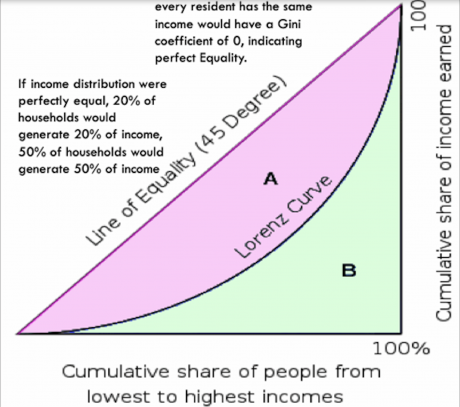 |
| What is the Gini coefficient? How Gini coefficient helps to understand the inequality data? | Gini coefficient is an important statistical measure of distribution developed by the Italian statistician Corrado Gini in 1912 for analyzing income or wealth distribution within a country or region. The coefficient ranges from 0 (or 0%) to 1 (or 100%), with 0 representing perfect equality and 1 representing perfect inequality. The coefficient ranges from 0 (or 0%) to 1 (or 100%), with 0 representing perfect equality and 1 representing perfect inequality. A country or city in which every resident has the same income would have a Gini coefficient of 0, indicating perfect Equality. On the other hand, a country or city in which one resident earned all the income, while everyone else earned nothing, would have a Gini coefficient of 1, indicating perfect inequality. While most developed European nations tend to have Gini coefficients between 0.24 and 0.36, the United States Gini coefficient is above 0.4, indicating that the United States has greater inequality. | 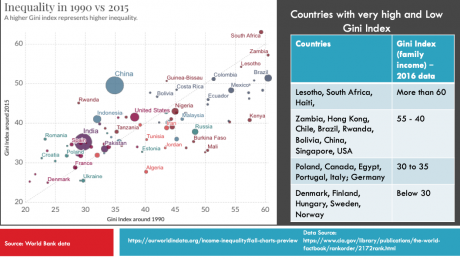 |
| Infant Mortality Rate | The number of deaths of infants under age 1 per 1,000 live births in a given year | Click here to review the recent data on Infant mortality (list of countries with the highest infant mortality rate). |
| Dependency Ratio | The ratio of the economically dependent population to the economically active working-class population, expressed as the ratio of the elderly population (ages 65 and older) plus the youthful population (under age 15) to the population in the working ages (between 15-64 years on an average). | Study the link given here and note down five countries with very high elderly dependency ratio. |
| Rate of natural change or natural growth of population | The difference between the birth rate and the death rate. | See countries with the highest population growth rate |
| Sex ratio or Gender ratio | The number of males per 100 females in a population. | Click here to read about the unequal distribution of sex ratio. See here the global distribution of gender ratio and the factors affecting the distribution. |
| Life expectancy | The average number of years a person can be expected to live from birth if other demographic factors remain unchanged. | According to UN estimate, global average life expectancy of 72.6 years for 2019. Click here to find out the list of countries ranked by life expectancy. Note down 5 countries with life expectancy more than the global average and 5 countries far less than the global average. Find out the reasons for this variation. |
| Demographic Transition | Signifies the historical shift of birth and death rates from high to low levels in a population. The Demographic Transition Model was developed by the American demographer Warren Thompson in 1929. DTM depicts the demographic history of a country. It refers to the transition from high birth and death rates to low birth and death rates as a country develops from a pre-industrial to an industrialized system. | Click here to read more about DTM. |
| Pronatalist Policy | The policy of a government, society, or social group to increase population growth by attempting to raise the number of births. It aims to encourage more births through the use of incentives | |
| Antinatalist Policy | The policy of a government, society, or social group to slow population growth by attempting to limit the number of births. This kind of population policy aims to discourage births through education on family planning and increased access to contraception, or by the enforcement of the stricter law such as 'One family one clild policy of China' from 1977 to 2015. | Analyze the population policy of Singapore at different periods of time. |
| Demographic Concepts | Global pattern/uneven distribution | Diagram/map/Photos |
|---|---|---|
| Population Density (Population per unit of land area; for example the number of people per people per square kilometer.) | Many of the world’s small islands (dependent territories) or small states such as Macao, Monaco, Singapore, Hong Kong and Gibraltar are the five most densely populated places on this planet. Singapore has nearly 8,000 people per sq. km, more than 200 times as dense as the US, and 2000 times that of Australia. Of the larger countries, Bangladesh is the most densely populated with more than 1,250 people per square kilometer followed by Lebanon, South Korea, the Netherlands and Rwanda. All of these countries have more than 500 people per sq. km. On the other hand, Greenland is the least dense, with less than 1 people per square km, followed by Mongolia, Namibia, Australia and Iceland. | 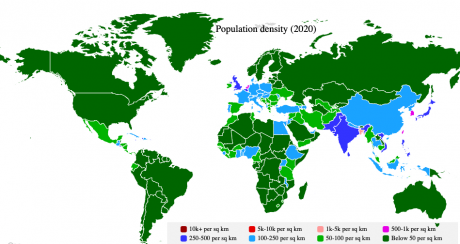 |
| Uneven population distribution within a country: Example of China | China exhibits extremely uneven population distribution. Most of China's population is located in the south-eastern part of the country, the most densely populated area is along the the south east coast. The northwestern provinces are sparsely populated with only 6% percent of the population, while the other 94% of the population is concentrated along the southeastern coast. | 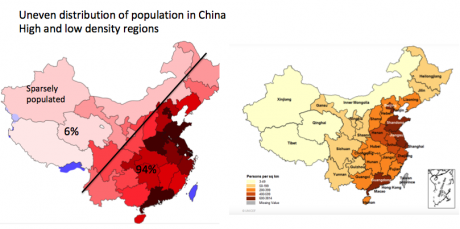 |
| Fertility | Mortality | Migration | ||
|---|---|---|---|---|
| Recent data: The world’s average fertility rate in 1980 was 3.8 children per woman, it has come down to 2.4 children per woman at present. Countries with high fertility rate are mainly located in Sub Saharan Africa such as Niger (7 children per women), Mali, Burundi, Uganda. Countries with very low fertility rate are mainly developed countries such as Singapore (0.8 children per woman in 2019), Romania, Poland, Italy, Japan, Germany, Spain etc. | Recent data: The world’s average mortality rate in 1980 was 10.7 deaths per 1000 population, it has come down to 7.7 deaths per 1000 population in 2020. Countries with high mortality rate are mainly located in Sub Saharan Africa such as Chad (15 deaths per 1000 in 2019), Angola, Zambia, Rwanda, Liberia, Lesotho, South Africa, Ukraine. | Recent data: In 2019, the total number of international migrants worldwide reached 272 million from 154 million in 1990. Europe and Asia host the largest number of international migrants. Remittances to developing countries reached $551 billion in 2019. Excluding China, remittances significantly exceeded foreign direct investment flow to developing countries and is 3 times larger than official developmental aid. |
| Reasons for high birth rate in LEDCs | Reasons for low birth rate in many MEDCs | Reasons for high death rate | Reasons for low death rate | Factors affecting the flow of migration | |
|---|---|---|---|---|---|
| To counter high infant mortality rate. For example: Afghanistan registers 117 deaths of infants per 1000 live births, Mali (104 infant’s death per 1000), Somalia, Chad, Niger, Nigeria records high infant mortality and all these countries are also marked by high birth rate. | Better nutrition and advanced medical care ensure low infant mortality | Poverty, poor nutrition, lack of clean water and sanitation associated with low level of economic development Such as in Lesotho (14.9 deaths per 1000), Somalia, and Mali. | Good living condition and personal hygiene, supply of safe drinking water, access to advanced medical care | Push Factors: Unemployment Lack of safety and fear of persecution Lack of basic services like health and education. Poverty and low standard of living Drought and crop failure Civil war and unrest Risk of hazard Isolation and discrimination Pull Factors: Better employment opportunity Politically stable and safe atmosphere Better service provision Economic opportunities and better standard of living Good food supplies and better nutrition Lower risk of natural hazard Friends and family | |
| Primary sector based rural economy where children are considered as economic asset and are likely to work on farms | Urban life style, lack of time, career pursuit and high cost of living restraint people to have more babies | Ageing population: countries with high percentage of elderly population seems to have high death rate such as in Germany (11 deaths per 1000), Belgium, Austria etc. | Large youthful population as in most of the Middle East countries like Qatar, UAE, Bahrain. | ||
| Children are considered as social security and are likely to look after their parents | Parents do not require children to look after them. Old age security is assured by medical insurance and other old age support system for example Robots to performs domestic work in Japan | Heart disease and strokes and cancer are the major causes of deaths in MEDcs. For example in USA. While Respiratory disease like pneumonia, tuberculosis and parasitic disease like malaria take great death toll in LEDCs. In Russia (13.8 per 1000) one of the major causes of death is alcohol consumption | Increased food supply, better nutrition and healthy diet. | Examples: Internally Displaced People (IDPs)– Syria, Colombia, Pakistan, Yemen and Ukraine, have registered high number of IDPs due to civil war and political unrest. | Examples Better job opportunity-more than 80% of the migrants in UK during the last decade were male and between 15-44 years of age. |
| Lack of family planning knowledge and poor medical facilities such as little availability and awareness of contraception, no access to abortion. | Female emancipation, late marriage and career pursuit prevent them to have more children | Civil wars and conflicts as in Ethiopia, Syria, Ukraine. | Decline in infant and child mortality. Globally infant mortality has decreased from 63 deaths per 1000 live births to 34 deaths per 1000 births in 2013 | Illegal immigrants to USA: There were about 11 million unauthorized immigrants in US in 2020. Mexican make up about half of the unauthorized immigrants in USA mainly in California, Texas, Florida (5% of U.S. labour force) | Immigrants constitute very high % of the population in Qatar (72%), Monaco (64%), Brunai (49%) Singapore (42%), Australia (27%) and Canada (21%). The reason behind this is mainly economic. |
| Ineffective government policy | Low response to pro natal birth policies | Transport related accidents and natural disaster are common cause of deaths in many African countries | Romania has by far the largest number of emigrants per million populations to OECD countries. | China was the top country for immigration into OECD countries followed by Poland. | |
| Cultural and religious tradition that oppose family planning and contraception | Better knowledge of and access to contraception and other family planning measures | Prevalence of HIV. For example HIV related death was highest in Nigeria, South Africa and in India during the last five years | |||
| Traditional gender role and tradition of women to stay at home and to bear child | Socio-cultural maladies like high suicide rate as in Japan. Suicide rate in Japan, South Korea, Nepal and India is 50% higher than the world average Suicide rate can also increase due to socio-economic stress as in Greece (death rate- 11 deaths per 1000 in 2014). Study reveals that austerity in Greece has led to tragic 35% increase in suicide in recent years | Most favored destination of immigration: with 45 million migrants in 2014, USA is the most favored destination of immigration followed by Germany (nearly 10 million immigrant), Saudi Arabia, UK (7 million), France, Canada, and Australia (6 million). | |||
| Early marriages in some society | High infant and child mortality in some countries like Afganisthan (117 deaths der 1000 live births) |
Data source: CIA World Fact Book, EST, World Bank Data , WHO data.
As of 2020, there are 47 megacities in the world, of which three have over 30 million residents: Tokyo, Shanghai, and Jakarta. The largest megacities in each continent are Tokyo in Asia, New York in North America, São Paulo in South America, Lagos in Africa, and Moscow in Europe.
Major trends: Population growth and distribution
- World population reached 500 million by about 1500. It took all of human history up to the early 1800s for world population to reach 1 billion people, and until 1960 to reach 3 billion
- The highest ever global population growth rate was reached in mid-1960s when population growth in the developing region peaked at 2.4% a year, popularly known as ‘population explosion’. By the late 1990s population growth rate had slowed down. However, population momentum drags the population growth at this period even though the fertility rate had fallen down. It took only 12 years for the world population to increase from 5 billion to 6 billion in 1999.
- Population growth rates have been falling in all regions of the world since 1990s, and this trend is predicted to continue. Current expectations are that the human population will level off at around 9.6 billion people by 2050, and will stabilize or slowly decline thereafter. According to the UN prediction, there’s an 80 percent chance that the actual number of people in 2100 will be somewhere between 9.6 to 12.3 billion.
- The report notes that India is expected to become the world’s largest country, surpassing China around 2028, when both countries will have populations of 1.45 billion. After that, India’s population will continue to grow and China’s is expected to start decreasing. Meanwhile, Nigeria’s population is expected to surpass that of the United States before 2050.
- Europe’s population is projected to decline by 14 per cent mainly due to negative population momentum. Overall, life expectancy is projected to increase in developed and developing countries in future years. At the global level, it is projected to reach 76 years in the period 2045-2050 and 82 years in 2095-2100.
Life Expectancy at Birth
Life expectancy denotes the average number of years a person is expected to live at birth if the current mortality conditions remain unchanged throughout the rest of the life. Life expectancy at birth is the commonly used indicator for analyzing mortality.
Countries with high life expectancy are: Japan, Iceland, Spain, Switzerland, Singapore, Israel, Sweden, Luxembourg. All these countries register life expectancy of over 80 years of age at birth.
Countries with low life expectancy are: Sierra Leone, Congo, Lesotho, Somalia, Swaziland, Angola, Chad, Mali, Burundi, Cameroon. All these countries record life expectancy of below 55 years of age at birth.
Factors affecting Life Expectancy
- Advances in healthcare and medicine including reduced infant mortality.
- Size of the elderly population reaching the end of their life cycle and on mortality rates
- Economic development and improved quality of life, better sanitation, access to clean and safe drinking water.
- Environmental conditions like less pollution, more greenery reducing the risk of cancer and respiratory diseases.
- Healthy and sustainable lifestyle reducing the risk of coronary diseases.
- General level of education that unplugs wide choices and awareness
- Frequency of catastrophic natural hazards and community preparedness to deal with. For example more than 90% of the population of Bangladesh, Nepal, Burundi, Haiti, Taiwan, live in areas at high relative risk of death from two or more hazards.
Population momentum
Population momentum refers to population growth or decline, which continues despite the falling or rising birth or fertility rate. Population momentum is the propensity for a growing population to continue growing even through fertility or birth rate is declining (positive momentum). On the other hand, it also includes the tendency for a population to continue to fall despite a rise in birth rate (negative momentum).
Population momentum naturally occurs towards the end of stage 3 of demographic transition. Even though the birth rate may be falling in a country, the natural increase in terms of total number may be rising due to population momentum. Positive momentum is typical for a stage 3 to 4 country in demographic transition with high base of youthful population. Negative momentum has been observed in case of the stage 5 countries with high numbers of elderly population.
- Despite the decline in overall population growth rate, the absolute size of the human population will continue to increase over the next several decades because of population momentum. At present nearly one third of the world’s population is under 15 years of age and therefore has not yet reached childbearing age. Because this demographic group is so large in absolute numbers, even if each woman has fewer children than in the past, there will still be a significant increase in global population over the next several decades. This is an example of positive population momentum.
- Most of the population growth over the next several decades is expected to occur in developing countries, where growth rates are generally higher than for developed countries. The United States is an exception, with one of the most rapidly growing populations of any developed nation.
Over, Optimum and Under population
is a dynamic concept, changes with time and space and as technology improves, total population changes, new discoveries and innovation enhance human capacity to resource utilization.
Human overpopulation occurs if the number of people exceeds the carrying capacity of the region means there are too many people relative to resource and technology creating pressure on the available resource endowment and thereby deteriorating the standard of living of a region.
A region or country can have low population density and still be overpopulated e.g. North eastern Brazil (23 people per sq.km) is overpopulated in respect to the carrying capacity of the region and characterized by low income, poverty, poor living condition and high level of emigration. A country may have high population density and is still able to provide for itself because of high technological and economic advancement, will not be considered as overpopulated e.g. Netherlands with 488 inhabitants per sq. km in 2020 (source: holland.com) is one of the densely populated countries in Western Europe but is not overpopulated.
What is the earth’s carrying capacity for the human population?
This question cannot be answered without considering consumption levels, and the technologies used to generate and support the consumption. The Ecological Footprint data suggest that 3 to 4 planets with the current earth’s bioproductive capacity would be required to support the current population if the whole world start consuming at the consumption level of US.
| Subject Specific Terms (related to migration) | Definitions | Extra Reference |
|---|---|---|
| Migration | The movement of people involving a change of residence. It can be internal displacement or international, voluntary or forced. It is usually for an extended period of time (more than a year) and does not include temporary circulation such as commuting or tourism. Migrations are broadly classified as Involuntary (forced) and Voluntary migration Long distance and Short distance migration International and Internal migration Most of the international organizations such as Amnesty International consider migrants to be people staying outside their country of origin, who are not asylum-seekers or refugees. | The number of international migrants globally in 2019: 272 million (3.5% of the world’s population) • 52 per cent of international migrants were male; 48 per cent were female. • 74 per cent of all international migrants were of working age (20–64 years). (Data Source: UN World Migration Report 2020) |
| Emigration | The process of leaving one country to take up permanent or semi-permanent residence in another. | 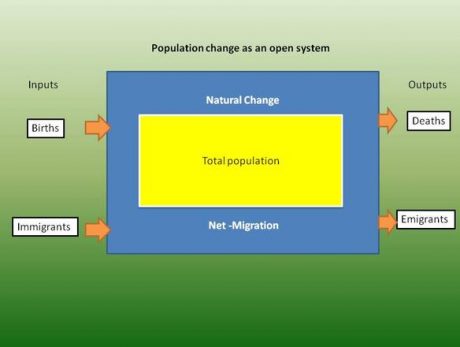 |
| Brain-drain | The emigration of a significant proportion of a country’s highly skilled, highly educated professional population, usually to other countries offering better economic and social opportunity. | |
| Remittances | Transfer of money or goods by foreign workers to their home country. | Read Case study: How Remittances to Afghanistan are lifelines: They are needed more than ever in a time of crisis . |
| Refugee | A person fleeing their home country in order to escape danger such as to escape war, persecution or natural disaster. According to international law, refugees have a right to international protection. Europe faced its worst refugee crisis since the Second World War in the last decade (2010-2020). | |
| Asylum seekers | People who seek refugee status in another country. Seeking asylum is a human right. This means everyone should be allowed to enter another country to seek asylum is seeking protection from persecution and serious human rights violations in another country, but hasn’t yet been legally recognized as a refugee. | |
| Illegal immigrants | People who enter another country without permission to remain there. | |
| Internally displaced people (IDPs) | Those involuntary migrants who have fled their homes but continue to live in their own country as they find shelter in another part of their country. Currently as per the UNHCR data , 71 million people have been forcibly displaced due to conflict, persecution or natural disasters in 2021. Check Amnesty International for more. |
Dependent and Working population
Dependency Ratio indicates the relationship between of the economically dependent population to the productive or economically active population. It is expressed as the ratio of the elderly people (aged 65 and older) plus the youthful population (under age 15) to the population in the working ages (16-64). Aging population are usually a product of longer life expectancy and lower birth rate.
Older dependency ratio (ODR) – the number of people aged 65 and above for every 100 people aged 16-64 (working population).
Dependency ratio =
Youthful Population ( 0-16 age group) + Elderly population (population over 64)
Working population (16-64 age group)
The higher the dependency ratio, the greater the economic pressure on the working population to pay more taxes.
Juvenility index =
Population between 0-16 age group
Population above 16 years
The higher the juvenility index, the greater the proportion of youthful population in a country.
Older dependency ratio (ODR) =
Non-economically active population (over 65)
Working population (16 -64 age group)
Consequences of Youthful and Ageing Population: Problems and Possibilities
| Youthful Population Countries with high % of youthful population: Countries of sub-Saharan Africa and the Middle East. More than 45% of the population is youthful in Niger, Uganda, Mali, Zambia, Burundi, South Sudan. All these countries register very low median age of population ranging between 15-17 years of age. In absolute numbers, India has the world’s largest youth population. |
|
|---|---|
| Problems (negative aspects / disadvantages) | Possibilities (positive aspects / advantages) |
| Large youthful population will demand more food. Strain on food supply can cause overgrazing and over cultivation, which in turn may lead to desertification. Many sub-Saharan African countries such as Mali, Nigeria and especially the semi-arid transition region of Sahel witnessed devastation as a result of human misuse of the land. Hundreds of thousands died of starvation. The growth rate of population in this region (3% per year) exceeds the growth rate of food production (2% per year). Overgrazing and poor agricultural practices lead to soil erosion and further degradation of the land. | Large youthful population provides the country with a chance to build an educated and skilled manpower for the future. This large cheap future workforce may act as an engine of growth for the entire economy. |
| It creates pressure on the existing resources and strains the education, health services, food supplies and accommodation availabilities. Government has to build special types of infrastructures to cater to the need of the youthful population such as availability of enough immunizations,providing schools and teachers, sports facilities and good public transport system. | Provides a growing market for the manufactured and consumer products. A country with a large youthful population may become a destination for foreign direct investment (FDI) apprehending a large consumer base in future as the young population enters into the working age. Young people are also the target group of the large MNCs selling consumer durables like play stations and mobile phones or global food chain like MacDonald, Starbucks. Consumer culture spreads faster in youthful generation. |
| Rural areas may become unable to sustain the growing young population and this would possibly cause rural to urban migration. Overcrowding in towns and cities could lead to shantytowns, poverty and lower standard of living. Need for more physical space would create ecological destruction. | Countries with a large base of youthful population and comparatively well developed health care system like Qatar, Saudi Arabia register lower death rate. |
| Economic pressure on the working population to support the young dependents. It may results into more taxation to raise government revenue to be able to spend for the necessary infrastructure development. On the other hand, schools, collages, sports facilities etc. may also become expensive due to rapid increase in demand. | If the country is able to grow and create jobs for the growing youths, it will provide a large tax base for the country in future. |
| Having a high proportion of youthful population means more competition in the job market and lack of availability of jobs in the future if the economy of the country fails to grow at a suitable pace by creating new opportunities for the young generation. Scarcity of employment opportunities may lead to social unrest as in North African region and in Greece. | Innovation and revolutionary ideas may surge into the society. For example, the rise of Arab Spring (mass popular protest against the dictatorial law and order situation, unemployment, corruption and rising prices in the Arab world) is closely related to the demographic configuration of the Arab world. Nearly 60% of the population across the Arab world is under the age of 30 and are free of the fear that held back their parents. Protesters in Jordon and Morocco wanted transition to constitutional monarchy, People in republican regime like Egypt and Tunisia overthrew the corrupted president and called for free election. |
| Political instability, conflict and even civil war may erupt in the country if the government is unable to maintain and control the growing population such as in Djibouti (54% of the workforce is unemployed), Congo (46%), Angola (26%), Tunisia and Syria (15%). | |
| Youthful population tends to register higher crime rate like vandalism, robbery, graffiti and burglary etc. Researches show that unemployed youths tend to join terrorist groups or in underworld activities as in Afghanistan. | |
| Ageing Population Countries with high % of elderly population: Japan and west European countries like Monaco, Germany, Italy, Austria with a median age of over 40 years. Elderly population constitute 17% of the total population in Germany. By 2060 nearly 40% of the population in Japan will be over 65 years of age | ||||
|---|---|---|---|---|
| Problems (Negative aspects) | Possibilities (positive aspects) | |||
| Pressure on working population, as they have to pay higher taxes to support the pension budget. Working population and the government have to support and cater to the need of the elderly population. Budget deficit will climb higher and higher as pensioners collect their retirement and medical benefits, all to be paid by a shrinking core of taxpayers. | Elderly people are a crucial part of the community and they contribute both knowledge and experiences useful to train the young generation. In certain skilled based industries like watch making, education, consultancy services elderly people are more valued over younger generation by the employer because of their valuable experiences and acquired skills. | |||
| Increased government spending on health care and pensions. Higher savings for pensions may reduce capital investment. More money needs to be spent on specialized health care, building of hospitals, old care homes and other specialized services for the elderly like wheelchair ramp on the buses and trains etc. This will reduce the scope of productive investment in education, research and in building up of economic infrastructures. This may cause trade deficit in future. | A significant portion of the ageing population in Europe, Australia and Canada are still physically and mentally much healthier than their preceding generation and are willing to work and contribute to tax revenue. In 2007 Germany raised its retirement age from 65 to 67 and the German government is now thinking about increasing the retirement age to 69 for full pension payments to start. | |||
| As older people do not work but demands several services, there will be a crunch of workers. Reduced supply of workers leads to increase in wages. This will delay the retirement age of the people as in Germany and will cause more immigration. With nearly 10 million immigrants in 2014, Germany has become the 2nd most preferred destination for the immigrants after the USA. | In MEDCs with an ageing demographic structure, elderly people are often viewed as an important market for certain types of products, known as ‘grey economy’. This may range from holiday companies, healthcare provider to hair color. Retirement migration to coastal resorts in Europe created a higher demand for specialist housing and services. This has helped to regenerate the remote rural areas from declining. | |||
| There will be less people to defend country and defense system will be more automated, expensive and destructive. | Voluntary services are a measure of social capital and an indication of a healthy society (Bittman 2002). Elderly people aid their families with childcare and find satisfaction in providing charitable services. Therefore, elderly people helps to built-up social capital. | |||
| Lack of innovation | A society with elderly population tends to register lower crime rate. | |||
| Reduced demand for manufactured and consumer goods. Industries migrate overseas for cheaper young labor creating trade deficit. | Art and culture benefits from an educated elderly population. The older generation in MEDCs are actively involved in community clubs and libraries. They also attend classical musical concerts, theater and art galleries more frequently than younger people. | |||
| The elderly may also have some unique and largely forgotten traditional skills to pass on to the younger generation. For example, the granny women in Southern Appalachian in the USA are the healers and midwives for the rural and secluded Appalachian community. | ||||
Why is Uganda’s population so youthful?
Youth in Uganda are the youngest population in the world, with 77% of its population being under 30 years of age
A youthful population is defined as a population that has a high proportion of young people (0-14 years of age) due to high birth rates and a decrease in infant mortality. Children are young dependents on the working population.
The high fertility may be due to: children being considered as assets in LEDCs especially for parents who work in the primary sector, lack of education for women about family planning, less access to contraception, religious forbidding for the use of contraception and a high infant mortality rate for which the high birth rate compensates.
The death rate in Uganda however has fallen rapidly in recent years: This is largely due to UNICEF’s global program, which helps to provide children with vaccinations against common infections, improved treatment for Malaria and other medical breakthrough.
The youthful population of Uganda (Ugandans aged 15 or below) stood at 19 million out of a population of 35 million. Many Ugandans are having access to safe water and to an improved sanitation system thereby mortality rate has also decreased. On the other hand, people also compensated for by having more children because of a lack of confidence that their children would survive infancy, thereby creating high fertility rate.
The problems of youthful populations
Economic
Economic burden on tax payers and more government spending for suitable infrastructure development like schools, sports facilities, public transport etc.
Increased unemployment in future if new jobs are not created which may lead to more competition for jobs, increased poverty, conflict and civil unrest
Ecological
Overall shortage of limited finite resources. Over exploitation of agricultural land for more food production and consequent deforestation, soil erosion, desertification and overall depletion of resources.
Socio-cultural
Migration, overcrowding in large cities, in LEDCs shantytowns may start to grow at the city edges, there could be lowering of living standard and a rising crime rate. An increasing population can cause water and land pollution.
Positive sides:
Large manpower for the future that may act as an engine of growth for the economy. Large market for consumer products.
Lower death rate and more innovations in the society.
| Uganda (an LEDC) in 2020 | Japan (an MEDC) in 2020 | |||
|---|---|---|---|---|
| Total population | 46 million in Uganda of which 24 million is youthful (0-14) in 2020 | 126 million people only 12% is youthful (0-14) | ||
| Median age | 17 years | 48 years | ||
| Birth rate | 35 births per 1000 population | 7 births per 1000 | ||
| Life expectancy | 64 years | 84 years | ||
| Fertility rate | 4.7 children per woman | 1.4 children per woman | ||
| Death rate | 6.2 deaths per 1000 | 11 deaths per 1000 | ||
| Infant mortality rate | 46 deaths per 1000 live births | 1.9 deaths per 1000 live births |
Classworks on Infographics
- Interpret the following infographic to describe the composition of the dependent and working population in the World
2. Create your own Infographic: Click on this link to create your own infographic.

